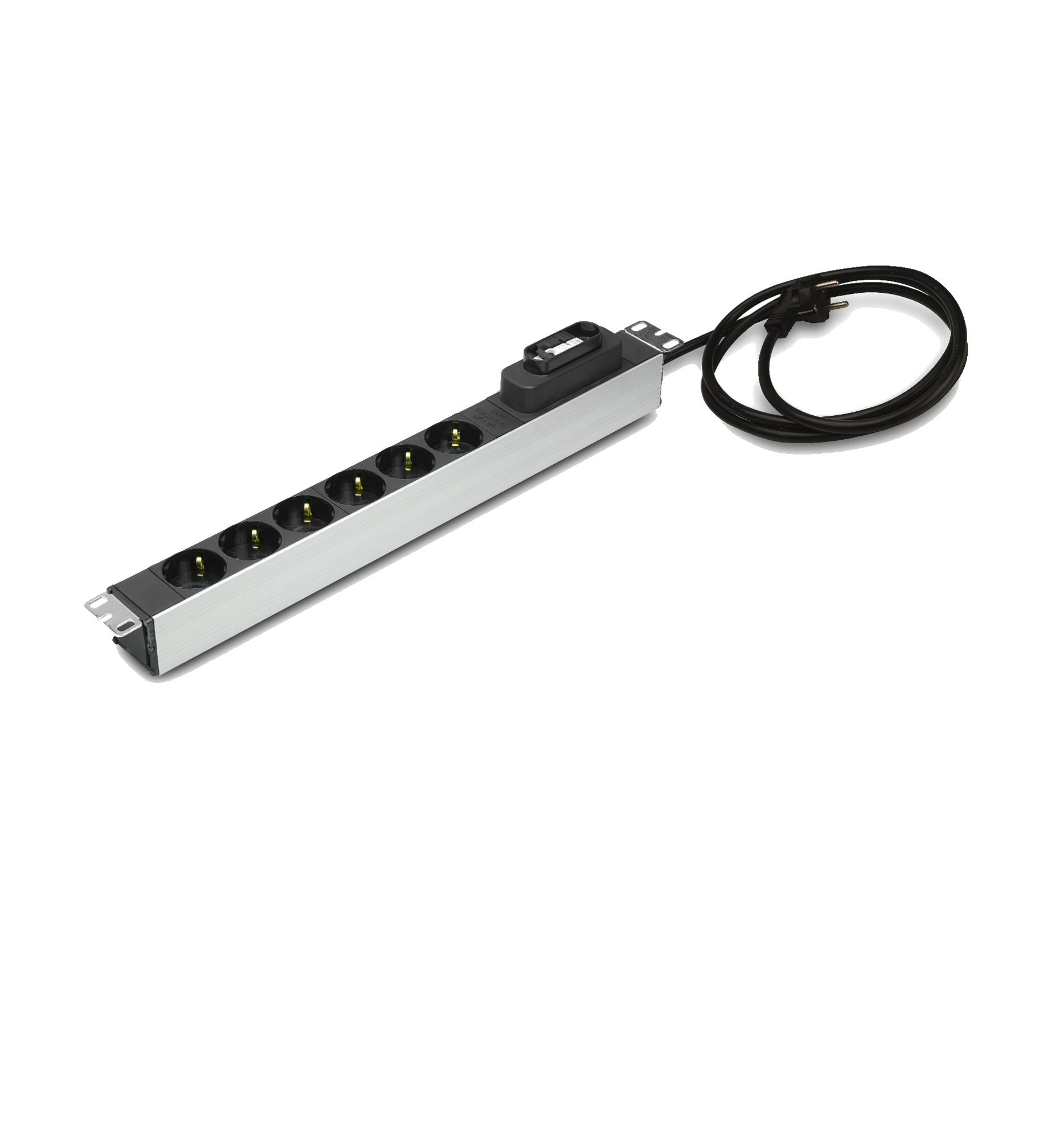Power Distribution Unit for Network and Server Cabinets
Power Distribution Unit also called Power Plug, A Power Distribution Unit (PDU) is a device used to distribute electrical power to various devices within a network or server cabinet. It is used to distribute power from a single source to multiple outlets, providing a central source of power for all devices within the cabinet. PDUs typically come in different types, including basic power strips, rack-mounted units, and managed units with monitoring and control capabilities. The specific type of PDU used in a network or server cabinet depends on the specific requirements and needs of the devices being powered.
There are so many PDU types around the world and they are operating for several purposes. Most knows type of rack Power Distribution Unit are basic, metered, monitored, or switched. All of them serves for a mutual target and it’s reliable power distribution at the rack cabinets, however intelligent PDUs are having another function and it’s remote monitoring capability, energy management, and future proof design platforms.
Basic PDU

Basic type Power Distribution Unit offering a reliable power distribution for your network equipment which carries vital importance inside a rack or cabinet. They are not featureful product but only entry-level solutions which makes them low cost solution at the same time. A basic power type Power Distribution Unit (PDU) is a simple device used to distribute electrical power to multiple outlets. It typically has a single input plug that connects to a power source, and multiple output receptacles for connecting devices. Basic PDUs do not have advanced features such as monitoring, control, or surge protection, making them suitable for low-power, low-density applications. They are commonly used in small data centers, home offices, and for powering individual devices or small groups of devices.
They meet a wide rage of requirements demanded by user with various electrical and receptacle configurations available. All these rack PDUs including Basic rack PDU must be in compliance with regional compliance (i.e. UL in North America and CE in EMEA), that is the main expectation for several data centers and insurance companies too.
Metered PDU

Metered Power Distribution Units help data-center operators to monitor consumption of power data from a local monitor to prevent any potential overload. Metered PDUs are engineered and they are most suitable for data center environments that carries a vital importantce for the user. A Metered Power Distribution Unit (PDU) is a type of PDU that provides real-time monitoring of power consumption. It has the ability to measure the amount of electrical power being used by connected devices and display this information on a built-in digital display or remotely through network monitoring software. Metered PDUs typically have a single input plug that connects to a power source, and multiple output receptacles for connecting devices. The meter readings can help identify power-hungry devices, prevent overloading of circuits, and monitor power usage for cost allocation and capacity planning purposes. These PDUs are commonly used in data centers, server rooms, and other high-density power environments.
Power Distribution Units at a glance
| Basic | Metered | Monitored | Switched | ATS | Hot Swap | |
| Suitable for: | Basic Power Distribution Unit | Local Power Monitoring | Remote Power Monitoring | Remote Power Management | Power Redundancy | Zero Downtime During Maintenance |
| Reliable In-rack Power Distribution | A | A | A | A | A | A |
| Multiple outlets, secure mounting, high quality | ||||||
| Digital Load Meter | A | A | A | A | ||
| Reports power consumption in amps | ||||||
| Network Interface | A | A | P | |||
| Enables remote monitoring and control | ||||||
| Switched Outlets | A | P | ||||
| Programmable or real-time power control | ||||||
| Individually Switched Outlets | P | |||||
| Individual programmable or real-time outlet control | ||||||
| Auto-Transfer Switching | A | |||||
| Redundant power for non-redundant equipment | ||||||
| Manual Transfer Switch | A | |||||
| Enables hot-swap replacement of UPS systems | ||||||
| A: All Models in this Product Family have this feature | ||||||
| P: Some Models in this Product Family have this feature | ||||||
Monitored Power Distribution Unit

A Monitored Power Distribution Unit (PDU) is a type of PDU that provides remote monitoring of electrical power consumption and distribution. It has the ability to monitor the amount of power being used by connected devices, detect any power irregularities, and provide alerts for potential issues. Monitored PDUs typically have a single input plug that connects to a power source and multiple output receptacles for connecting devices. The monitoring can be done through built-in digital displays, network management software, or web-based interfaces. These PDUs are commonly used in data centers, server rooms, and other high-density power environments where real-time monitoring and control of power is critical.
Monitored PDUs very much suitable and featureful to view the power consumption, for the rack and through remote access when operating to provide reliable power distribution to vital IT equipment and devices. Therefore, Monitored PDUs are offered in unit-level and also outlet-level remote monitoring options. They provide fast access to vital data to find out the energy consumptions also provide alarming option to alert operators. They arevery suitable for high traffic data centers all around the world.
Switched Power Distribution Unit

Switched Power Distribution Unit (PDU) is a type of PDU that provides remote control of electrical power to connected devices. It has the ability to turn on/off power to individual outlets, allowing administrators to remotely power cycle devices as needed. Switched PDUs typically have a single input plug that connects to a power source and multiple output receptacles for connecting devices. The switching can be done through built-in digital displays, network management software, or web-based interfaces. These PDUs are commonly used in data centers, server rooms, and other high-density power environments where remote management and control of power is needed.
Switched PDUs offers a detailed data of vital IT device power consumption, at rack and through remote access with an additonal fearure of turning on, turning off, or rebooting power source at each socket you choose. Switched PDUs are engineered to limit power usage of data centers at the outlet to prevent any kind of overloads caused accidentially and also remote data-centers. Switched Rack PDUs are highly productive and usefull for data centers.
International standards for Power Distribution Units (PDUs)
There are several international standards that apply to Power Distribution Units (PDUs), including:
- IEC 60320: The International Electrotechnical Commission’s (IEC) IEC 60320 standard covers the general requirements for plugs and socket-outlets. It defines the different types of connectors and socket-outlets that can be used in PDUs.
- UL60950-1: The Underwriters Laboratories (UL) standard UL60950-1 covers the safety requirements for information technology equipment, including PDUs.
- EN 60950-1: The European standard EN 60950-1 covers the safety requirements for information technology equipment, including PDUs.
- RoHS: The Restriction of Hazardous Substances (RoHS) directive sets limits on the use of certain hazardous substances in electrical and electronic equipment, including PDUs.
- CE Mark: The CE mark indicates that a product meets the requirements of the European Union’s directives for product safety, including the Low Voltage Directive and the Electromagnetic Compatibility Directive.
It is important to note that these standards may vary by country and region, and PDU manufacturers should ensure that their products meet the appropriate standards in their target markets.



